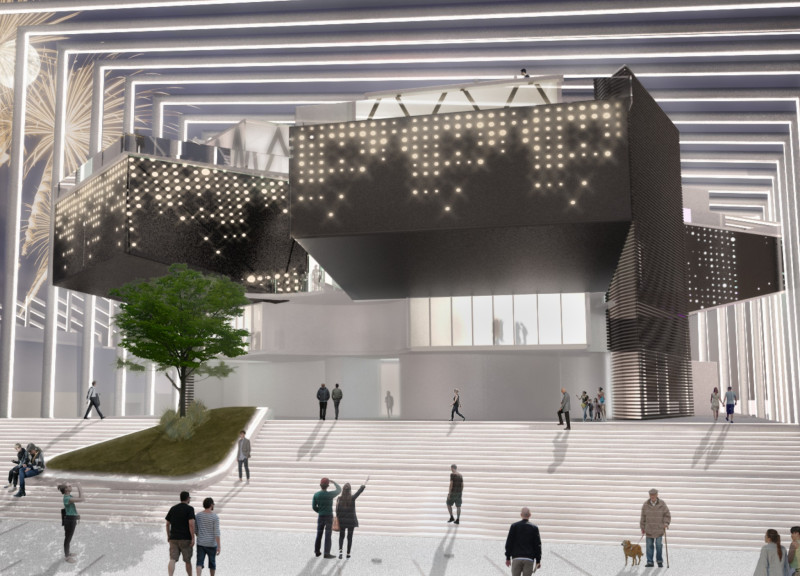5 key facts about this project
SMART ISLAND is located on an island in Riga, Latvia. It is designed to act as a cultural hub, focusing on community engagement and interaction. The overall concept emphasizes the creation of a public space where people can gather, share experiences, and enjoy various activities. By incorporating different functions like auditoriums, exhibition areas, and office spaces, the design encourages a blend of performance and everyday life.
Design Concept
The project includes four auditoriums that can function on their own or be combined to accommodate larger gatherings. This adaptability is essential, allowing for a variety of events and uses. Additionally, the central lobby serves multiple purposes, functioning as a stage as well as a space for meetings and socializing. This emphasis on flexibility promotes active participation from the community.
Environmental Integration
A key feature of the design is its weather-responsive canopy, which is cleverly hidden within arch structures. This canopy is equipped with motion sensors that activate when rain or snow approaches, ensuring that both the parking area and the auditorium stay protected. This thoughtful design not only improves the usability of the spaces but also creates a strong connection between indoors and outdoors.
Parking Solution
The parking area accommodates 790 vehicles in a layout that keeps access straightforward. Entry and exit points are located on multiple levels, making it functional for visitors. This design addresses the needs of the users while fitting well with the overall layout of the site.
Structural Efficiency
The construction process uses prefabricated methods to enhance efficiency. These techniques allow for quicker assembly on-site, reducing overall labor costs and minimizing disruptions during construction. By prioritizing these modern practices, the design maintains structural integrity and aligns with contemporary approaches to building.
The project features a series of arches that not only define entrances but also provide weather protection. These elegant structures add character and encourage exploration of the public areas, inviting people to experience the cultural offerings while staying sheltered from the elements.































